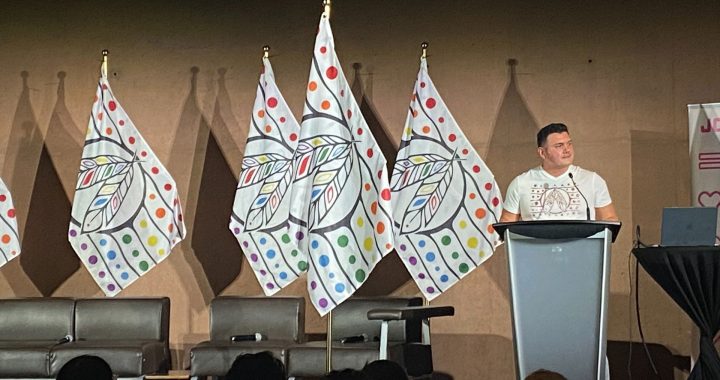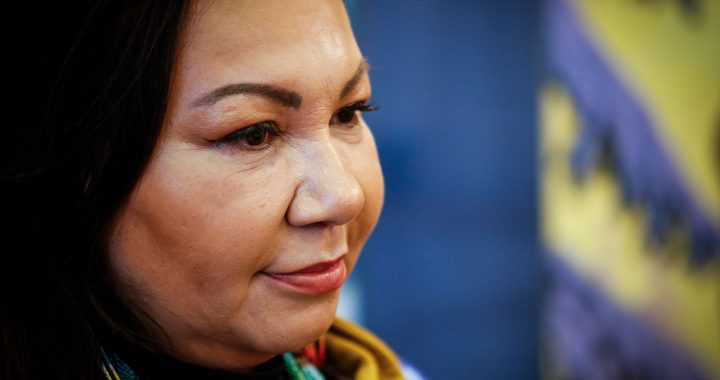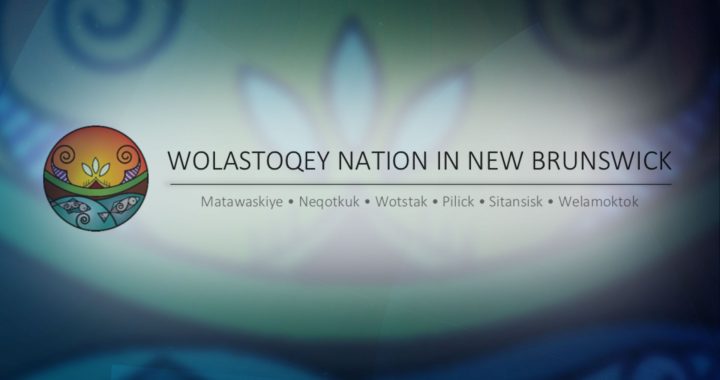The Comm-Unity Centre in Montreal’s Milton Park neighbourhood says it wants to build community within its unhoused population.
Since 2022, the organization has been providing a safe space for the unhoused and housed residents to interact. It’s home to a workspace, library, and small outdoor space, connecting volunteers and support workers with the neighbourhood’s homeless population.
The idea is to connect unhoused people with resources, volunteers and provide programming like art workshops and do community advocacy.
“The only way to react to homelessness and help is it takes a village, it takes a whole community where everyone is just as important as everyone else, so it requires inclusion, understanding, and forgiveness,” said Jonathan Labire, the director of Comm-Unity.
Saila Kelly is an Inuit carver and frequent visitor of the centre. He said he’s been living on the streets of Montreal for about a decade.
“I come from [an] artisan family, they do, we do stone work, we do printing, drawing, printing, sewing, within my family,” said Saila, “Art is a form of healing for me and it’s a part of learning.”
Saila hasn’t always had access to art space – when he first arrived in Montreal, it was a tough adjustment.
“When I first came down here I had a culture shock,” he said. “The hustle and bustle, the noise pollution, the everybody for themselves mentality, like I come from a very close-knit community where everybody knows everybody. And it’s more homey, it’s like people helping [each other].”
By accessing Montreal-based services like Open Door and Comm-Unity, he said he’s been able to sell his art and just got an apartment.
“It’s a struggle still, I got to work my way up slowly, one step at a time,” said Saila.
Chelsea works for Mossy Society, one of Comm-Unity’s partners, organizing art workshops with unhoused populations. She asked Saila if he’d like to lead a workshop for Concordia University students – provided she can get the funding.
“Just speaking to street people, we’ve realized there’s just a high demand for activity that’s not drinking alcohol or doing drugs on the street, they want to keep occupied in positive constructive ways,” she said.
Last year, a report from the Ombudsman of Montreal indicated the numbers of homeless Indigenous people amounted to a humanitarian crisis. The report also indicated that Inuit represent 25 per cent of the homeless Indigenous population in Montreal, even though they only represent five per cent of the Indigenous population in the city.
Jonathan, who was homeless himself as a teen, said that his approach to intervention work changed when he began working with Indigenous homeless people.
“I was in that intervention mode where you get an apartment you get a job and then you’re ok, that’s mostly the model I’ve had and what I’ve learned,” he said.
“But meeting the Indigenous people and being aware of intergenerational traumas, present traumas, the culture shock, so it shook me and I’m there, so I can’t do the normal equation that they’ve given me for my job so what can I do from there, so it was so challenging to go deeper,” he said.
Going deeper included forming longstanding relationships with people and helping them become aware of their rights and needs.
“Being on the street is so hard that you don’t have that luxury to say let’s find my needs, let’s fight for my rights, there’s no way you can fit that in your agenda of the day, because every day is the same day and you just need to fight for everything you need before you go to sleep,” said Jonathan.
While Montreal opens up temporary emergency shelters during the recent cold snap, Chelsea said the government isn’t doing enough to care for its unhoused population.
“I think the government’s approach to homelessness is insufficient at best, there’s so much potential for resources and often it comes off as performative, what’s actually done is for headlines and not to actually help the people,” she said.
Currently, Mossy Society and Comm-Unity’s funding is largely coming from university grants. Getting government money for services is a “lengthy process,” said Chelsea.
“We’re building slowly towards the credibility it takes to be able to get government funding.”
Jonathan said government – and community – response to homelessness is largely reactive.
“Heat wave, cold wave, COVID, and all of a sudden everybody wants to do something in homelessness, like they’re bringing their own way to do it, but then they’re there just for like a crisis period. They create needs, they create gaps, and then they just leave as if nothing lasted,” said Jonathan.
Comm-Unity is currently working on securing more long-term funding and permits for a day shelter at a nearby church. Ultimately, Chelsea, Jonathan and Saila said that for unhoused people to truly thrive, people need to recognize their humanity.
“I am someone. I am a person,” said Saila. “I’m an artist. I’m a father. I’m citizen. I’m an uncle. I’m all these things, and I have to make sure I grasp and acknowledge that I am these things. I’m not just a homeless person, I’m someone.”









